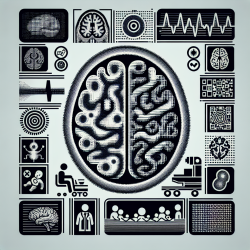Introduction
Natural disasters, such as earthquakes, present unique challenges to healthcare providers. The study "Pain after Earthquake" offers valuable insights into pain management during such crises. By understanding these findings, practitioners can improve their skills and enhance patient outcomes in emergency settings. This blog explores the key takeaways from the study and suggests ways to implement these insights into practice.
Understanding Pain Patterns in Crisis Situations
The study conducted in the aftermath of the 2009 L'Aquila earthquake in Italy highlights the prevalence and management of pain in emergency settings. With a sample of 958 patients, the study found that 34.6% experienced pain, with severe pain reported by 58.8% of these patients. This prevalence underscores the critical need for effective pain management strategies during disasters.
Key Findings and Implications for Practice
- Biphasic Pain Pattern: The study observed a biphasic pattern in pain prevalence, with acute pain syndromes peaking in the first two weeks due to trauma and resurging in the fifth week due to rebuilding efforts. Practitioners should anticipate these patterns to allocate resources effectively.
- Limited Drug Availability: Pain management was constrained by the availability of drugs, primarily anti-inflammatory agents, paracetamol, and weak opioids. This highlights the importance of having a robust supply chain and contingency plans for drug availability during emergencies.
- Importance of Training: The study emphasizes the need for specialized training in pain management for healthcare providers. Continuous education and preparedness can significantly enhance the effectiveness of pain management in crisis situations.
Implementing Data-Driven Strategies
Practitioners can leverage these findings to enhance their practice in several ways:
- Developing Protocols: Establish clear protocols for pain assessment and management, incorporating the use of pain scales as a vital sign.
- Training and Education: Invest in ongoing training programs for healthcare providers to ensure they are equipped with the latest knowledge and skills in pain management.
- Resource Allocation: Plan for adequate drug supplies and consider alternative pain management strategies, such as non-pharmacological interventions, when resources are limited.
Encouraging Further Research
The study "Pain after Earthquake" provides a foundation for further research into pain management in disaster settings. Practitioners are encouraged to contribute to this field by conducting studies that explore innovative pain management strategies and evaluate their effectiveness in various emergency contexts.
To read the original research paper, please follow this link: Pain after earthquake.










